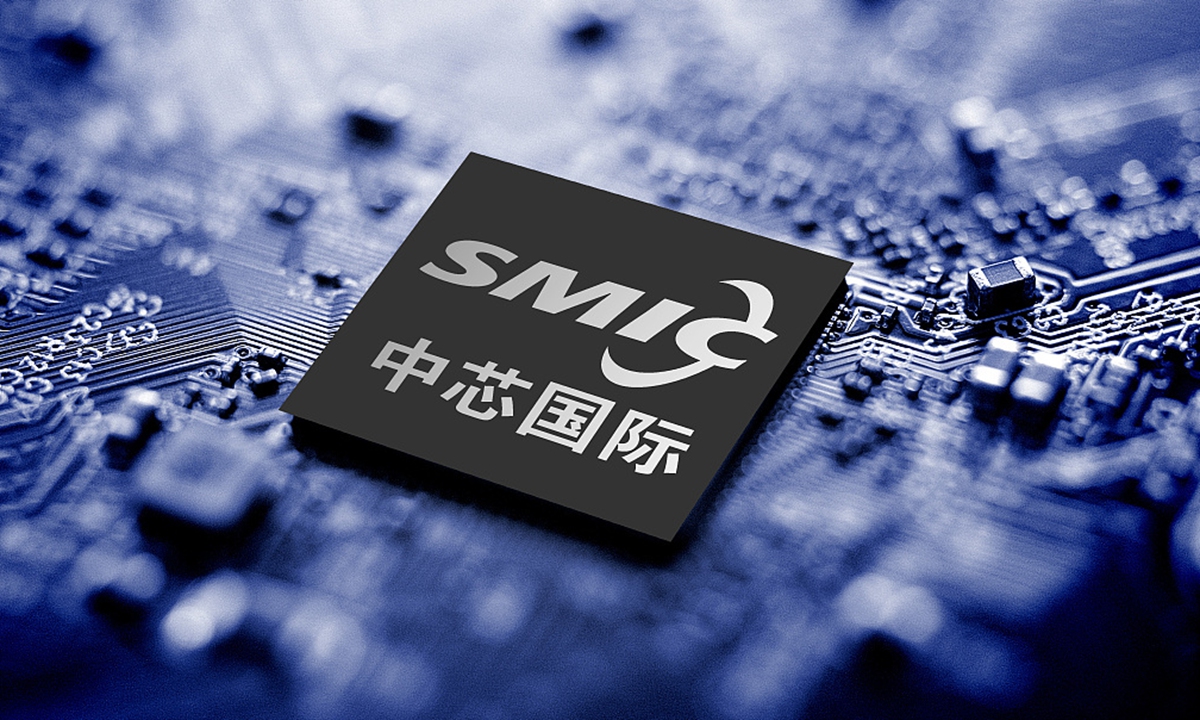
SMIC Photo: CFP
China's top chipmaker Semiconductor Manufacturing International Corp (SMIC) on Thursday reported record revenue and gross margins for 2022, but it also issued a grim warning of a double-digit decline in revenue for 2023 due to an industry downturn and external uncertainties.
In the last quarter of 2022, SMIC's revenue reached more than $1.62 billion, down from $1.91 billion in the previous quarter and up from $1.58 billion in the same quarter in 2021, according to the company's financial filing to the Hong Kong Stock Exchange on Thursday night.
For the full year of 2022, the company's revenue jumped 33.6 percent from the year before to a record high of $7.27 billion. Meanwhile, the gross margin increased to 38 percent in 2022, also hitting a record high.
However, citing an industry downturn and complex external uncertainties, the company said that revenue could drop between 10 percent and 12 percent in the first quarter of 2023. And even if the external environment remains stable, revenue is likely to drop by a low-teens percentage on a yearly basis.
"Looking forward to 2023, in the first half of the year, the industry cycle is still at the bottom and the impact of external uncertainties is still complex," SMIC said in the filing.
China's semiconductor industry and SMIC itself have become a top target in the US' relentless technology crackdown campaign against China. The US put SMIC on its so-called Entity List as early as 2020, effectively banning supplies of critical chipmaking machines to the Chinese firm.
In the latest move, Washington is pressuring allies such as Japan and the Netherlands to implement a ban on exports of advanced chipmaking equipment to Chinese companies.
Yet, despite the US crackdown, SMIC has made strides in both revenue and technological advancement. For example, the company saw an annual growth rate of more than 30 percent for two consecutive years in 2021 and 2022, it said in the filing.
On the technological front, the company said in October 2020 that it would soon produce 7-nanometer wafers for the Chinese market, which would be a major breakthrough. Then in 2022, some foreign media reports claimed that the company had produced a chip that shares qualities with those of a 7-nanometer chip, though the company has not responded to the claims.
The company is also expanding its production capacity, with various new plants having entered or about to enter production. By the end of 2022, SMIC Shenzhen started production, SMIC Jingcheng began pilot production, and construction of SMIC Xiqing began, according to the company's filing on Thursday.
Meanwhile, the US' ban on exports of chipmaking equipment may also delay some SMIC plants. Mass production at SMIC Jingcheng is scheduled to be postponed by one or two quarters due to equipment delays, the company said.




